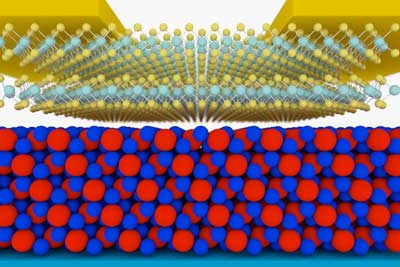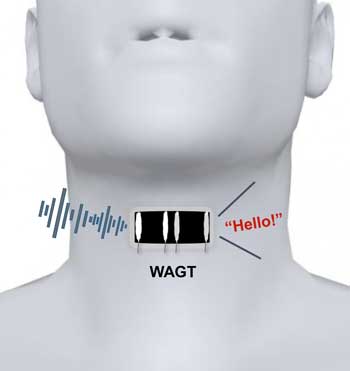 Researchers demonstrate a robotic platform for delivering drugs in the human body.
Researchers demonstrate a robotic platform for delivering drugs in the human body.
Wednesday, July 24, 2019
Microrobots show promise for treating tumors
 Researchers demonstrate a robotic platform for delivering drugs in the human body.
Researchers demonstrate a robotic platform for delivering drugs in the human body.
Nanoparticles promote functional healing following spinal cord injury
 Paralyzing damage in spinal cord injury is often caused by the zealous immune response to the injury. Scientists have developed nanoparticles that lure immune cells away from the spinal cord, allowing regeneration that restored spinal cord function in mice.
Paralyzing damage in spinal cord injury is often caused by the zealous immune response to the injury. Scientists have developed nanoparticles that lure immune cells away from the spinal cord, allowing regeneration that restored spinal cord function in mice.
A novel method to fine-tune the properties of carbon nanotubes
 Scientists have developed a novel method to fine-tune the optoelectrical properties of single-walled carbon nanotubes (SWCNT) by applying an aerosolized dopant solution on their surface, thus opening up new avenues for SWCNT application in optoelectronics.
Scientists have developed a novel method to fine-tune the optoelectrical properties of single-walled carbon nanotubes (SWCNT) by applying an aerosolized dopant solution on their surface, thus opening up new avenues for SWCNT application in optoelectronics.
Developing technologies that run on light
 Researchers are designing a nanoscale photon diode - a necessary component that could bring us closer to faster, more energy-efficient computers and communications that replace electricity with light.
Researchers are designing a nanoscale photon diode - a necessary component that could bring us closer to faster, more energy-efficient computers and communications that replace electricity with light.
Tiny changes, big impact
 As the use of nanoparticles in products grows ever more common, scientists are exploring ways to keep them from harming our freshwater ecosystems.
As the use of nanoparticles in products grows ever more common, scientists are exploring ways to keep them from harming our freshwater ecosystems.
Does one size does fit all? A new model for organic semiconductors
 Researchers report new observations for organic single crystals that derive from their flexibility, opening the door for new organic electronics.
Researchers report new observations for organic single crystals that derive from their flexibility, opening the door for new organic electronics.
Valleytronics core theory for future high-efficiency semiconductor technology
 Scientists discovered a theory that can expand the development of valleytronics technology, which has been drawing attention as a next generation semiconductor technology. This is expected to advance the development of valleytronics technology one level further, a new magnetic technology of next generation that surpasses the existing data processing speed.
Scientists discovered a theory that can expand the development of valleytronics technology, which has been drawing attention as a next generation semiconductor technology. This is expected to advance the development of valleytronics technology one level further, a new magnetic technology of next generation that surpasses the existing data processing speed.
Using 2D materials to make ultrathin transistors for faster computer chips
 An important breakthrough in transistor technology has been achieved: With the help of novel insulators, high-quality transistors can be produced using two-dimensional materials.
An important breakthrough in transistor technology has been achieved: With the help of novel insulators, high-quality transistors can be produced using two-dimensional materials.
Artificial graphene throat could someday help mute people 'speak'
 Researchers have developed a wearable artificial throat that, when attached to the neck like a temporary tattoo, can transform throat movements into sounds.
Researchers have developed a wearable artificial throat that, when attached to the neck like a temporary tattoo, can transform throat movements into sounds.
Subscribe to:
Comments (Atom)
